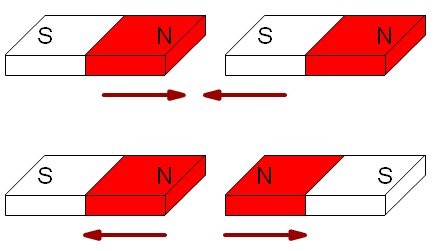What is magnetism and what properties affect magnets?
Magnetism is the ability of magnets to attract elements that have a magnetic component. These magnets are composed of positive and negative poles that have the peculiarity of attracting and retaining objects with ferromagnetic materials depending on whether they are equal or different poles.
On the other hand, magnets can be classified as permanent or temporary magnets depending on the intensity to which they are subjected to the magnetic field. Permanent magnets, unlike temporary magnets, do not need help from the outside to produce their magnetic field, so they can retain it for a long period of time.
The magnetism of a magnet can be divided according to susceptibility:
Diamagnetism: magnetism is not permanent, it is only there when the field is present. The susceptibility of this type of magnetism is negative, which means that the magnetization is opposed to the magnetic field.
Paramagnetism: in this case, the material is attracted by the external magnetic field. The susceptibility of this type of magnetism is small and positive. Contrary to diamagnetism, paramagnetism strengthens the magnetic field due to its magnetization.
Ferromagnetism: these are materials that have the ability to magnetize once the external field has disappeared. The susceptibility of this type of magnetism is large and positive, so it provides greater reinforcement to the magnetic field than paramagnetism.
What are the general properties of magnets?
The magnetism that is present in magnets have several propertiewhich are as follows:
Attraction property: As mentioned above, magnets can attract or repel metallic objects. The point of greatest attraction is at the end. There are different types of magnets and each of them has different attractive forces. In addition, magnets do not lose their attractive properties, even if they are inside water.
Magnetizing capacity: The ability of a magnet to magnetize can be permanent or instantaneous.
Ability to create multiple poles: The magnet can produce two positive and two negative poles, in the event that the magnet splits in two, it will create one pole of each for the two magnets separately.
Particle orientation: The poles of the magnets have the ability to be placed in a certain orientation, that is why to know them we will need the use of the compass.
